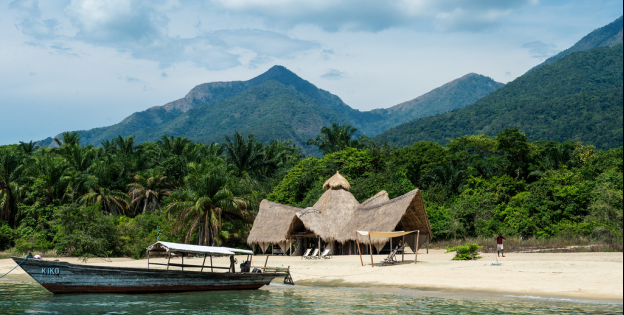Africa is amazing for its variety of flora and fauna. But, perhaps, the most amazing are its natural objects. One of them is Lake Tanganyika.
Features of the lake
One of the oldest lakes on earth, it is located in the rift fault in eastern Africa. This is the longest freshwater lake on Earth. Its length is 676 km and its width is about 50 km on average. It is located at an altitude of 773 m above sea level in the deepest rift of the African rift. Its greatest depth is about 1470 m. The water in the lake is practically unmixed and has a different temperature. If on the surface it fluctuates within the limits of 20 to 30 degrees, then at a depth of only 80C. Transparency of water is about 30%. On the shores of the lake are 4 countries in Africa. They are the Democratic Republic of the Congo, Burundi, Zambia and Tanzania.
There is an opinion that the lake was named by the tribes living on the coast. From the tribe of the tribe, Bembu Tanganyika translates as "a tank filled with fish." Tanganyika - in second place in terms of fresh water on the Earth after Lake Baikal.
Tanganyika is a "fish tank"
From ancient times to our days, the lake has almost never completely dried up. Therefore, it preserved many species of fish and other aquatic inhabitants, and in the course of evolution new ones were added. Of the 200 species of inhabitants, 170 are endemic. The lake is settled to a depth of about 200 m. Deeper - water is saturated with hydrogen sulfide and there is no life there. In this wonderful lake there is a huge amount of aquarium fish. They amaze with their diversity. The population of the coast has a small income from the trade in this commodity.
Industrial fishing is carried out in the lake. There are 2 species of herring sardines and 4 other species. More than 45 thousand people are engaged in this trade in Tanganyika.
Anthropogenic impact
The lake has a number of environmental problems. Along with complete dependence on climatic conditions, it suffers from human activities. In view of the lack of modern sanitation, the inhabitants of the coast all the products of their vital activity are thrown into the lake. The same happens with the waste of enterprises. The multiplication of a plant called water hyacinth, which covers its surface with water, prevents the penetration of sunlight. There are several UN projects on conservation and enhancement of the lake's wealth.
The lake is the main transport artery between the states of the coast. Many thousands of ships and other small vehicles plow through its expanses. Also, a regular ferry carries passengers, which can accommodate 800 passengers.
Despite such a huge anthropogenic impact on the nature of these places, the beauty of the lake can not leave anyone indifferent. The shores of the lake are rocky, riddled with coves. Among the animals on the shores there are hippopotamuses, crocodiles, waterfowl, gastropods. In the lake there are thousands of fish of extraordinary beauty. A diverse world of birds for life will leave an indelible impression of being on Lake Tanganyika.
Читать далее
